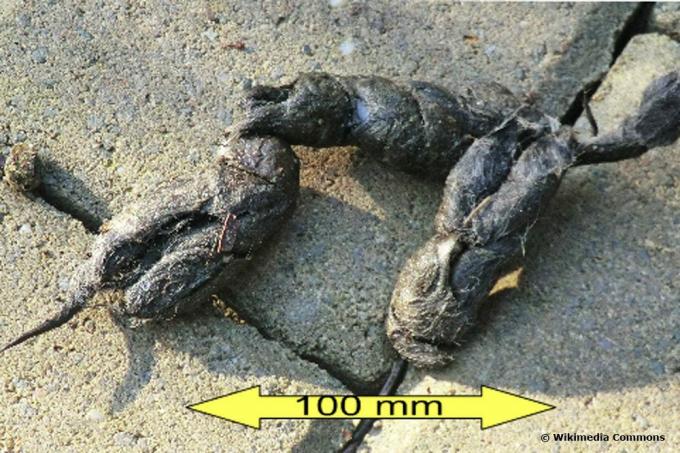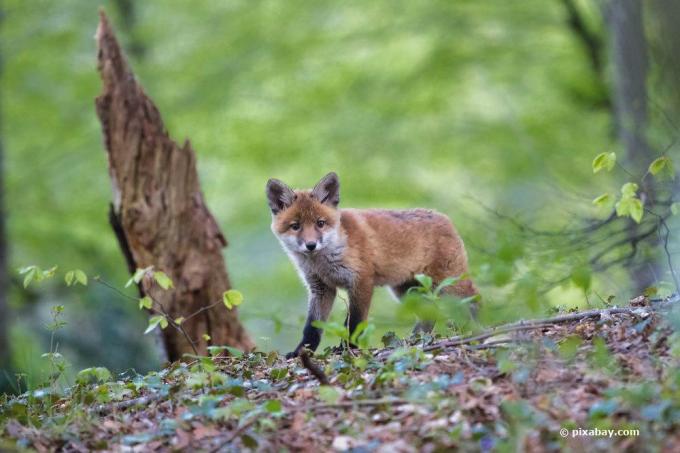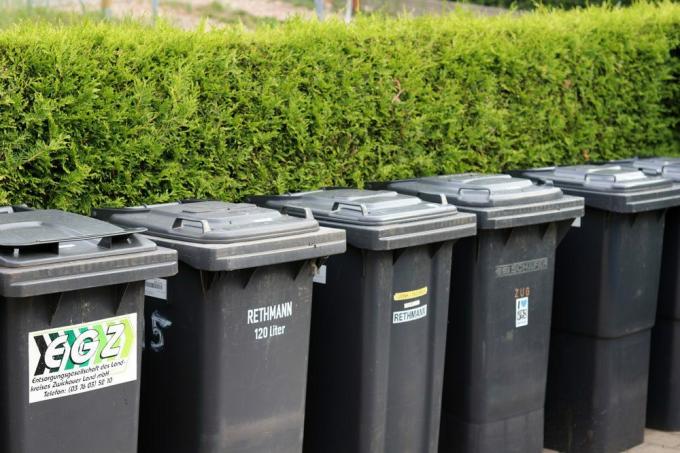
table of contents
- Distinguish feces
- Other distinguishing features
- Eliminate animal droppings
- Other possibilities
- Precautions
Animal droppings in the garden is not only unsightly, it sometimes also harbors certain dangers, such as the fox tapeworm. It is therefore important to be able to recognize fox droppings and to be able to remove them properly.
Distinguish feces
Various animals lay their droppings in the garden. On the one hand pets such as cats or dogs and on the other hand various wild animals. Examples in addition to the fox:

- squirrel
- Badger (rare)
- Marten (common)
- Brown hare or deer (very rare)
- Hedgehog
- Mice and rats
- Shrews and bats
- Raccoon (generally rare, but locally common)
Some types of droppings differ from fox droppings at first glance. These include the individual dry excrement balls from deer or rabbit and the smaller, also dry excrement from mouse or rat. Shrews and bats also leave behind smaller, dry globules of feces, but these are not as firm and easily fall apart. Remnants of the chitin shell of eaten insects become visible.
No droppings, but vaults leave owls and falcons below their nocturnal resting places. These are easy to recognize by the fact that they contain small bones and remnants of fur from animals. Usually the appearance is not as dark as animal droppings.
Other distinguishing features
The badger often lays its droppings in the same shallow earth hollows, so-called latrines. The appearance can differ from time to time. Raccoons, too, often always use the same storage space. In contrast, fox droppings are deposited individually. It has a dark, sometimes gray color and tapers at the end. It is larger than, for example, squirrel or hedgehog droppings, but like these, it contains different food residues:

- Berry
- Seeds
- Cherry pits (also common in marten droppings)
- feathers
- Fur or hair
Note: Since foxes mark their territory, they tend to place their droppings in elevated places.
Eliminate animal droppings
Foxes are rarely in the garden, but if there is something to eat for them, they keep coming back and mark their territory accordingly. So it can happen that fox droppings are found again and again in the garden, which can easily be recognized by its appearance over time. Elimination can be done in different ways. The easiest way is to bury the animal droppings in place. However, this is not possible everywhere, for example in the sandpit or in the race. This method is not even suitable in the vegetable patch, because tapeworm eggs are very resistant.
Other possibilities
If you own a dog and have the appropriate poop bags for this, you can also use them for the fox droppings. Then throw the bag in the trash.

If you have a compost heap in the garden that you only use for flower beds, you can dispose of the animal droppings there too. It is best to use a shovel and pick up the fox droppings along with the soil underneath. Finally, clean all tools thoroughly with hot water and soap.
Note: If you have to handle animal droppings, be sure to use gloves!
Precautions
It goes without saying that animal droppings are better not handled with bare hands. Children and pets should be kept away if possible. Particularly with small children, care must be taken that no animal faeces, regardless of the animal, get into the mouth. Your own pets can also have worms in their digestive tract. They need to be dewormed regularly. Dogs should learn not to leave dog poo all over the yard, even if allowed to roam free.
Note: Cats like to bury their droppings in loose soil or sand. Therefore, always cover the sandpit after playing.


